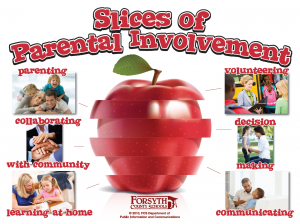“You can divide the Red Sea,” my son declared.
We had just finished discussing the story of Moses (assigned by our homeschool provider as a lesson under Values Education). I emphasized that Moses’ story was a great narrative but it was just a story.
“What do you mean?” I asked. “What did you think about Moses’ method of dividing the Red Sea?”
Sil answered, “His method was a miracle, but you can still divide the Red Sea even without one.”
“How?” I asked.
“Make a dam,” he said.
I chuckled. It’s moments like these that reinforce my determination to pursue homeschooling, at least until Sil finishes Grade 6.
Through homeschooling, I have witnessed the development of my son’s character, his mental faculties, and his talents. By no means am I saying that homeschooling is easy — it entails a lot of blood, sweat, tears, and a persevering commitment — but it has also been very fulfilling. At the same time, it is far too easy for parents who homeschool their kids to doubt their own teaching abilities, to worry if they are teaching their children correctly.
“Surely, a professionally trained teacher is better qualified than a homeschool parent.”
I used to think that too until natural curiosity had me googling the academic performance of homeschooled children when compared to their traditionally schooled counterparts. Many reliable sources agree that homeschoolers in general significantly outpace traditionally schooled children. A study by Rey (2010) reported that “In most studies, the homeschooled have scored, on average, at the 65th to 80th percentile on standardized academic achievement tests, compared to the national school average of the 50th percentile (which is largely based on public schools). A few studies have found the home-educated to be scoring about the same or a little better than public school students.”
This study shows that homeschooled students are not academically disadvantaged. In fact, in many instances, they are doing very well or even better. Homeschooling is one of the few ways parents can gain control over their children’s education.
While the nature versus nurture debate is still fiercely raging in many educational and psychological circles, I have to point out that we have limited control over our genes and resulting heredity. Rather than curse our fates for not being born with a mythical Math gene, and consequently failing calculus, we could rather concentrate on the things over which we do have control.
And one of these few things is parental involvement. Unfortunately, parental involvement is in a precarious position in relation to other priorities of Pinoy families. With the Philippines’ current unemployment and underemployment rate, and job-skills mismatch, it’s very challenging to find a job that pays well and can comfortably support a family. As a result, both parents are forced to work, to meet the economic demands of supporting a family. One natural consequence is that parents have less and less time to spend with and on their children. This is saddening because increased positive parental involvement has many benefits for the child and his/her development. In this relation, while I am certainly not advocating that parents neglect the survival of their family, I do encourage them to spend more quality and quantity time with their young children.
Parental involvement can give rise to many positive effects for children, but I will just name a few below:
Increased Academic Achievement
Many studies agree that parental involvement can either promote or retard cognitive (mental) development, and thus also affect student achievement. Bempechat (1992) cited Coleman et al. (1996) who reported that achievement was more influenced by family background and environment than the quality of the school.
In our case, the first school that we enrolled Sil in had a whole year to teach him how to read, yet he was still unable to do so at the end of that year. It was unfortunate because I thought he was ready to read. He was 6 at that time and could already identify all the letters in the alphabet (a sign that the child is reading-ready). The school failed us. This reading readiness was a major hindrance to enrolling Sil in the first grade of the next school, because this school (as with most other schools) do not admit non-readers to Grade 1.
So my husband and I worked on Sil’s reading using Starfall.com’s online reading programs which, had animation, text, and audio features. After just two months of working with the program, coupled with patient and consistent mentoring, guidance, and tutoring from us, Sil was able to read. At nine, he is now reading newspapers with lola, his interest and emotions piqued with the territorial standoff with China. He plans to read the “Lord of the Rings” soon.
So how exactly does parental involvement help in achievement? One is through providing tutoring when the child needs it (Haggard, 1957 and Toby, 1957 in Bempechat, 1992). This was what we did daily with Sil in almost all his lessons, especially in parts where he encountered a lot of difficulty.
For example, it took a while for him to comprehend and solve word problems. So I made sure that he first mastered the four basic mathematical operations — addition, subtraction, multiplication, and division. Then we went back to word problems, and this time around, he was finally able to comprehend and solve them.
The bottom line is that parents act as teachers, where parental instruction is embedded in daily life. Instruction need not be explicit nor involve some particular strategy (Bempechat, 1992). In other words, though teaching can be subtle and indirect, learning can still take place.
Parents also encourage achievement through an active approach in learning (Hess and Shipman, 1965 in Bempechat, 1992). How can they do this? By giving children many opportunities to explore independently and learn by themselves, while still ensuring the child’s safety and wellness.
Reflecting on this second principle, I recall how we observed an entrepreneurial spirit in Sil. One day, Sil said he wanted to earn his own money. So we asked him how he planned to do this.
“I’m going to sell mangoes,” he declared, looking at our fruit-laden Indian mango tree. Except for me designing his “Mangoes Sold Here” label, we left him on his own and offered little assistance. As a result, he contracted the help of two close friends and between the three of them, they were able to sell 100 pieces of mangoes and split the profit evenly between themselves. Now, every summer, Sil sells mangoes with his friends.
Rogoff and Gardner (1984) in Bempechat (1992) reported that parents help children learn by showing how adults handle new problems while using past strategies for familiar problems. In other words, adults organize children’s thinking tasks, monitor the difficulty level of the problem, while providing pointers, and modeling mature performance.
When Sil could not understand division, I used Lego blocks (which he was fond of playing with) to group items and explain the concept. After a few demonstrations, Sil was able to solve division problems much better.
Academic Socialization
Bempechat (1992) cited numerous researchers who asserted that parental attitudes, expectancies, and beliefs about schooling and learning are also instrumental in the development of their children’s attitudes and behaviors toward achievement. For example, although there is little evidence that Math ability is dependent on gender, mothers of Math underachieving boys tend to explain their poor achievement due to lack of effort. In contrast, mothers of Math underachieving girls chalk it up to lack of ability. As a result, many girls tend to think that their gender is to blame for their poor Math ability, even though this isn’t true.
Math is a tricky problem because like many students, Sil has a love-hate relationship with Math. He hates the fact that Math is so exacting, so when he complains how he is hopeless, I always tell him that he can learn Math. After resting or eating (he might just be tired or hungry), and upon returning to the problem, Sil develops a more positive attitude. When he finally gets a problem, he calls himself a “Math monster” and I always agree with him. Consistently doing this has enabled Sil to develop quiet confidence in his Math skills. He now has no fear of Math.
Other Positive Learning Behaviors
Sénéchal, and LeFevre (2003) reported that parent’s involvement in teaching children about reading and writing words promoted the development of early literacy skills. They also reported that early literacy skills directly predicted word reading at the end of Grade 1 while it indirectly predicted reading in Grade 3 or specifically, that the word reading skill acquired at Grade 1 influenced reading comprehension in Grade 3. Thus, the child’s ability to read fluently is rooted in his early experiences, including parental involvement.
Although Sil was a little late in reading, our intensive two-month reading intervention made him a voracious reader. Nowadays, when I buy Sil a short book, he can finish it in 30 minutes. He is also reading encyclopedias, Calvin and Hobbes comics, the Sunday’s funnies, and newspaper articles on the Spratlys issue, among others.
Reduced Behavioral Problems
Finally, parental involvement can help even in the treatment of social phobia and general anxiety. Parental involvement was reported to significantly reduce children’s and even adolescent’s social and general fears, and that this improvement was retained even after one year (and presumably even beyond that). In addition, Domina (2005) reported that parental involvement can also prevent behavioral problems.
Sil has always been quite physical and easily bored when he is not mentally challenged. The language barrier didn’t help either because children in our neighborhood were intimidated by his mastery of English (his primary language). As a result, he was often misconstrued by his classmates, their parents, and even his teachers.
For the longest time, I felt like a failure as a parent. But instead of giving up, I did more research, talked to other homeschoolers, and visited another homeschool in Paranaque. Still, it was quite providential when we found a homeschool provider that had many UP Education graduates who acted as academic consultants and staff. One of his “homeroom” teachers understood that Sil was an intelligent, strong-willed, and active child. Since she was also the one who administered the annual Weschler test http://en.wikipedia.org/wiki/Wechsler_Preschool_and_Primary_Scale_of_Intelligence , she appreciated that Sil needed to be mentally challenged. She narrated a test on conservation of mass. Sil was shown two groups of seven blocks. One group was arranged in a line. The other group was scattered. Most of the children readily answered that the disorganized group of blocks was fewer. Sil looked at her and said, “I will check”. He counted both sets of blocks and remarked, “See? it’s the same.” Then he said, “I will check again”. Sil rearranged the scattered blocks into a straight line, beside the arranged groups of blocks. He then remarked, “See? It’s the same.”
Sil’s fellow homeschoolers were fluent English speakers, very bright, confident, outspoken, and very active. We have also enrolled Sil under a local taekwondo class. All of these interventions has enabled him to expend his energy on something productive, build up his physical strength, earn him friendship with his peers, and again made us confident that we are doing the right thing.
The Bottom Line
The verdict is out: parental involvement can promote children’s academic achievement and attitudes, influence other positive behaviors like reading and writing, assist in easing fears and phobias, and even prevent behavioral problems, among others.
Although the modern Filipino family has many priorities, especially economic ones, such considerations must be balanced with the critical need for parental involvement in children’s lives which can greatly influence their learning, their attitudes and ultimately, their future.
References
Bempechat, (1992). The role of parent involvement in children’s academic achievement. Retrieved April 28, 2012 from http://www.adi.org/journal/fw92/BempechatFall1992.pdf
Domina, T. (2005). Leveling the home advantage: assessing the effectiveness of parental involvement in elementary school. Sociology of Education, 78 (3), 233-249. Retrieved April 28, 2012 from http://soe.sagepub.com/content/78/3/233.short
Marin, C.E. (2010). Parental involvement and group cognitive behavioral treatment for anxiety disorders in children and adolescents: treatment specificity and mediation effects. Florida International University. Retrieved April 28, 2012 from http://digitalcommons.fiu.edu/cgi/viewcontent.cgi?article=1314&context=etd
Ray, B. (2001). Academic achievement and demographic traits of homeschool students: A national study. Retrieved April 25, 2012 from the Academic Leadership: The Online Journal, 8(1) http://www.academicleadership.org/392/academic_achievement_and_demographic_traits_of_homeschool_students_a_nationwide_study/
Sénéchal, M. and LeFevre, J. (2003). Parental involvement in the development of children’s reading skill: A five-year longitudinal study. Child Development, 73(2), 445-460. Retrieved April 28, 2012 from http://onlinelibrary.wiley.com/doi/10.1111/1467-8624.00417/abstract
Spence, S., Donovan, C., and Brechman-Toussaint, M. (2003). The treatment of childhood social phobia: the effectiveness of social skills training-based, cognitive-behavioural intervention, with and without parental involvement. The Journal of Child Psychology and Psychiatry, 41 (6). Retrieved April 28, 2012 from http://onlinelibrary.wiley.com/doi/10.1111/1469-7610.00659/abstract
Photo credit for ‘Slices of Parental Involvement’: Copyright 2010 Forsyth County School. Used under Creative Commons.






But of course! Thank you for noticing that. 🙂
On the other hand, this article can also be interpreted as piece defending individualized education as opposed to the traditional group approach to education.